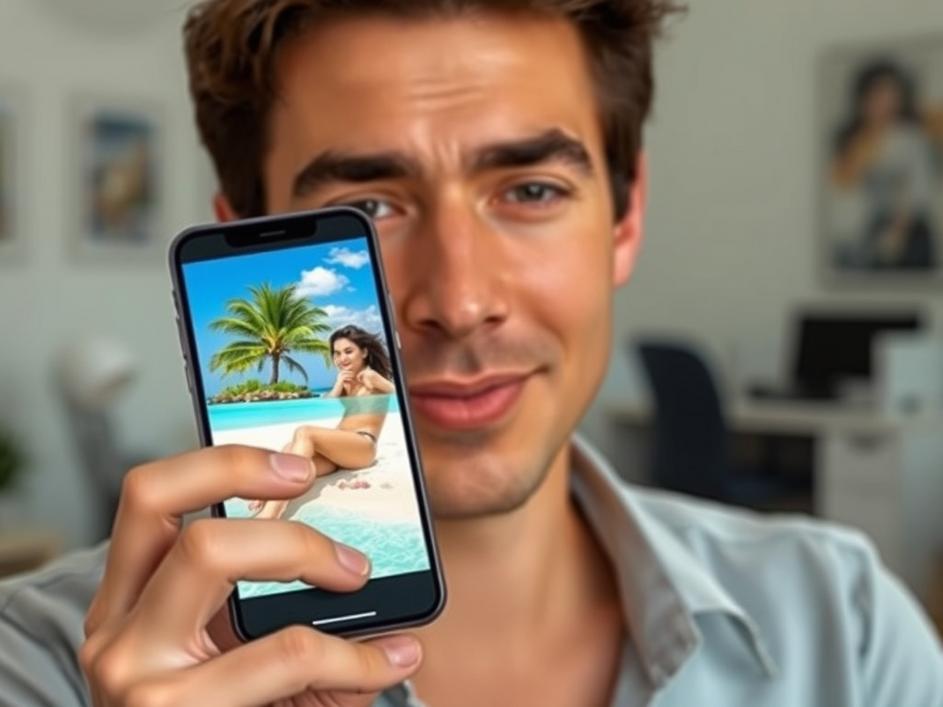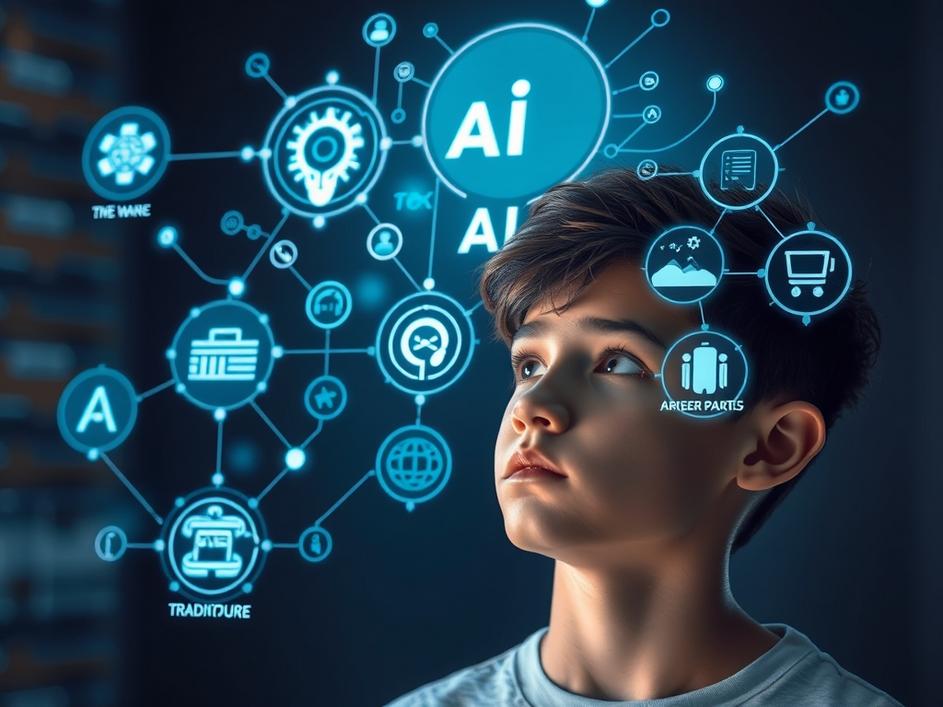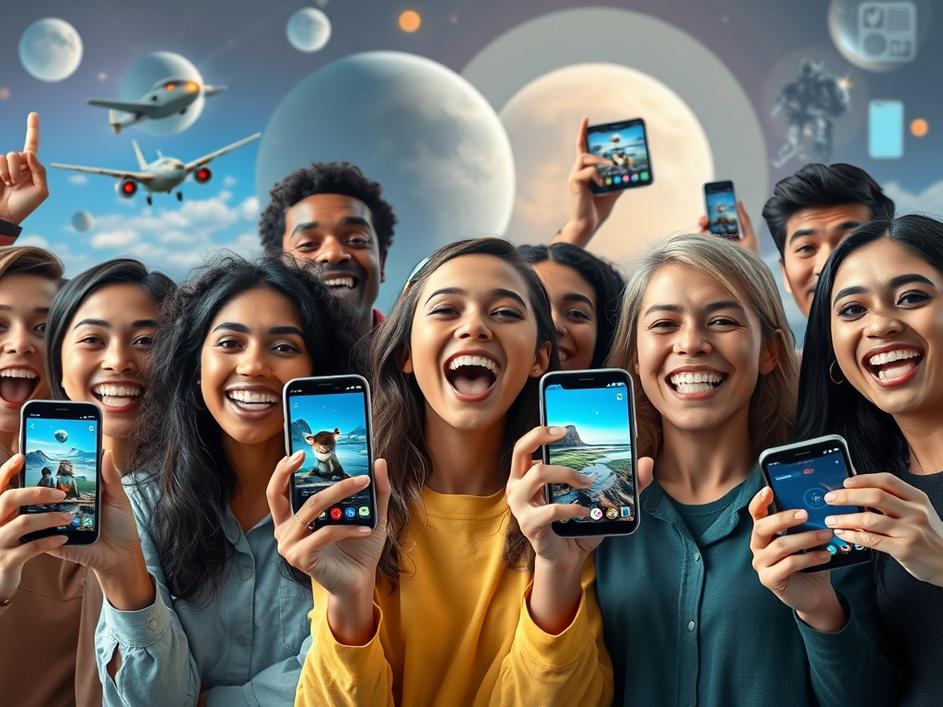


We are a digital agency helping businesses develop immersive, engaging, and user-focused web, app, and software solutions.
2310 Mira Vista Ave
Montrose, CA 91020
2500+ reviews based on client feedback

What's Included?
ToggleIt’s no secret that our lives, or at least the highlight reels of them, often play out on social media. We scroll, we tap, we double-tap, and we constantly see a stream of perfect moments: breathtaking vacations, gourmet meals, and lives that look utterly curated and fabulous. This isn’t a new phenomenon, of course. For ages, people have found ways to look like they have more, know more, or simply *are* more. Think about it: designer knock-offs have been a thing forever. People even rent private jet interiors just to snap a few photos that scream “I’m living the high life!” But lately, there’s a fresh player in this game of digital make-believe, and it’s a big one: Artificial Intelligence. This isn’t just about tweaking a filter or cropping a photo; we’re talking about AI creating entire dream scenarios, especially when it comes to those coveted vacation snapshots.
Why do we feel this relentless pull to present an idealized version of ourselves online? Part of it is human nature – we want to be admired, to belong, to feel successful. But social media amplifies this to an extreme. Every feed is a showcase, and every scroll can feel like a silent competition. Seeing friends jet off to exotic locales, sunning themselves on pristine beaches, or hiking majestic mountains can stir up a serious case of FOMO – Fear Of Missing Out. It makes us want to show that our lives are just as exciting, just as fulfilling, and just as envy-inducing. But let’s be real, actual travel isn’t always cheap or easy. Time off, flight costs, accommodation, planning – it all adds up. So, what happens when the desire to project that globetrotting image clashes with the realities of a tight budget or limited vacation days? Enter AI, the ultimate photo editor and scene creator.
This is where things get really interesting. Instead of just enhancing a photo of your backyard, AI apps can now place you into entirely different worlds. Imagine taking a selfie in your living room, then with a few taps and a small fee, that same selfie shows you lounging by an infinity pool in Santorini, or sipping a cocktail on a white sand beach in the Maldives. These apps use powerful AI algorithms to seamlessly integrate your image into a completely new, artificial background. They match lighting, shadows, and even reflections to make it look surprisingly real. You don’t need a passport, you don’t need a plane ticket, and you certainly don’t need to save up for months. All you need is a phone, an internet connection, and perhaps a small payment, and “poof!” – you’re instantly transported to your dream destination, at least on your screen. It’s a quick, convenient fix for that Instagram-worthy moment, fulfilling the visual demand without the physical journey.
So, you’ve posted your AI-generated vacation photo, and the likes and comments start rolling in: “Wow, where are you?!” “Looks amazing!” “Wish I was there!” It feels good, right? A momentary rush of validation. But what exactly are we getting out of this? Are we buying genuine happiness or simply a fleeting illusion of it? While the digital accolades might provide a temporary high, they don’t replace the actual experience of digging your toes into warm sand, tasting new foods, or meeting people from different cultures. An AI-generated picture might give you social media currency, but it can’t give you the stories, the growth, or the lasting memories that come from real travel. It’s like eating a delicious-looking plastic meal – it might satisfy the visual craving, but it leaves your stomach empty and your soul unfed.
This trend brings up some big questions about authenticity and our perception of reality. If everyone starts using AI to craft these perfect, unattainable realities, what does that mean for how we trust what we see online? The lines between what’s real and what’s generated become incredibly blurry. This constant exposure to manufactured perfection can also be tough on our mental well-being. It creates an even more unrealistic standard, making genuine, messy, imperfect lives seem less valuable. We might find ourselves caught in a cycle of chasing an ideal that doesn’t even exist, fueling anxieties and making us feel inadequate. It’s a classic case of “keeping up with the Joneses,” but now the Joneses have an AI assistant crafting their perfect lives.
While the allure of an AI-powered instant vacation is strong, it’s worth taking a moment to think about what truly enriches our lives. Is it the number of likes on a photo, or the actual joy of an experience, big or small? Maybe a weekend camping trip in a local park, or a day spent exploring a nearby town, holds more true value than a beautifully faked picture of Bali. These real moments, even if they aren’t Instagram-perfect, become part of our personal story, building actual memories and connections. We have a choice: to engage with the world as it is, finding beauty and adventure in our own unique circumstances, or to outsource our experiences to algorithms. There’s nothing wrong with dreaming of far-off places, but perhaps the magic lies not in just showing up, but in the journey itself, real or aspirational.
AI’s ability to create stunning, believable travel photos is a fascinating leap in technology, offering an easy way to fulfill that desire for digital validation. It’s a powerful tool, reflecting our ongoing need to present our best selves online. But as we embrace these new digital capabilities, it’s important to pause and ask ourselves what we truly value. Is it the fleeting satisfaction of a well-received post, or the profound, sometimes messy, but always enriching experience of living a real life, creating genuine memories, and finding joy in the world as it actually is? Maybe the most “like-worthy” life isn’t the one filled with AI-generated perfection, but one built on authentic moments, even if they’re not always picture-perfect.



Leave a reply